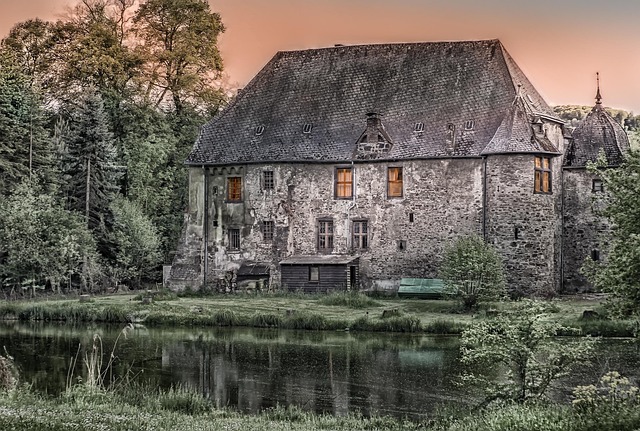A swift post-storm storm-damaged roof inspection is paramount to avert mold growth and structural issues. Look for missing or damaged shingles, flashing, or gutters, and note any water intrusion inside. Immediate actions include shutting off the main water supply, using fans/dehumidifiers, and photographing damage for insurance claims. Regular inspections and professional restoration services are key to maintaining home integrity and preventing costly repairs.
After a storm, quick action is crucial to mitigate water damage and prevent mold growth, which can lead to severe structural issues. This article guides homeowners through essential steps post-storm events, focusing on your home’s most vulnerable points, especially the roof. We’ll explore common entry points of water intrusion, emphasizing the importance of a thorough roof inspection for early detection of storm-damaged roofs. By understanding these aspects, you can effectively contain damage, restore your property, and implement long-term strategies to safeguard your home from future storms.
Understanding Water Damage After a Storm: Common Entry Points and Immediate Concerns
After a storm, understanding water damage is crucial for preventing mold and structural issues. The initial step involves a thorough storm-damaged roof inspection to identify common entry points where water may have infiltrated. Look for missing or damaged shingles, flashing, or gutters—these are often the first lines of defense against rainwater. Signs of water intrusion inside the home, such as stains on ceilings or walls, should also be immediately noted.
Immediate concerns include turning off the main water supply to prevent further leakage and using fans or dehumidifiers to dry out affected areas quickly. Documenting damage with photos is essential for insurance claims. Keep in mind that mold can start to grow within 24-48 hours of moisture intrusion, so swift action is critical to mitigating potential health risks and preserving the structural integrity of your home.
Evaluating Your Roof: Signs of Damage and the Importance of an Inspection
Evaluating your roof for signs of damage after a storm is crucial, as it can prevent serious issues like mold growth and structural problems. A storm-damaged roof may exhibit visible clues such as missing or damaged shingles, leaks, or unusual discoloration. These indicators suggest that water could be infiltrating the attic, which, if left unchecked, can lead to extensive damage over time.
Regular inspections are essential for maintaining your home’s integrity. If you suspect any roof damage after a storm, don’t delay; arrange for a professional inspection. This step will not only help identify existing problems but also allow for early intervention and prevent more severe, costly repairs in the future.
Containment and Restoration: Steps to Prevent Mold Growth and Structural Degradation
After a storm-damaged roof inspection, immediate containment and restoration actions are crucial to prevent mold growth and structural degradation. The first step is to secure the area by repairing any leaks or damaged shingles. This prevents further water intrusion and mitigates existing moisture levels. It’s essential to thoroughly dry out the affected areas using fans and dehumidifiers; this process not only reduces humidity but also discourages mold spores from thriving.
Professional restoration services should be engaged to assess and address the damage systematically. They employ specialized techniques like hepa vacuuming to remove contaminated debris and use anti-microbial treatments to inhibit mold growth. Regular monitoring of moisture levels and temperature helps ensure the area remains conducive for drying, preventing long-term issues. This prompt and thorough approach not only restores the structure but also safeguards against costly repairs down the line.
The Role of Professional Restorers: Tools and Techniques for Comprehensive Repair
Professional restorers play a pivotal role in mitigating water damage and restoring properties to their pre-loss condition, especially after storm-damaged roof inspections. Their expertise lies in utilizing advanced tools and techniques to assess and repair structural elements, ensuring mold prevention and long-term stability. With specialized equipment like moisture meters, thermal imaging cameras, and air dryers, restorers can identify hidden water sources, measure humidity levels, and accelerate the drying process.
These professionals employ a range of strategies, from removing contaminated materials and replacing affected sections of the roof to applying antifungal treatments and sealing off vulnerable areas. Their comprehensive approach ensures that not only is the visible damage repaired but also the underlying causes addressed, preventing future issues like mold growth and structural degradation.
Long-Term Prevention Strategies: Ensuring Storm-Damaged Homes Stay Safe and Sound
After a storm, many homeowners face the daunting task of assessing and repairing their properties, especially when it comes to water damage. While immediate cleanup is crucial, long-term prevention strategies are essential to safeguard homes from potential mold growth and structural deterioration. A comprehensive approach starts with a thorough storm-damaged roof inspection. Professionals should assess the integrity of the roofing system, identifying any leaks or missing shingles that could allow water penetration.
Regular maintenance and timely repairs are key. Homeowners can prevent future issues by establishing a schedule for inspecting and repairing their roofs, especially after severe weather events. This proactive measure not only saves on costly repairs but also ensures the structural integrity of the home, protecting against mold and promoting a safe living environment.
After experiencing a storm, addressing water damage promptly is crucial to prevent mold growth and structural issues. By understanding common entry points, evaluating your roof for signs of damage, and taking steps to contain and restore the affected areas, you can significantly mitigate potential long-term problems. A thorough storm-damaged roof inspection by professionals ensures comprehensive repair using advanced tools and techniques. Additionally, implementing long-term prevention strategies will help keep your home safe and sound, even in the face of future storms.
